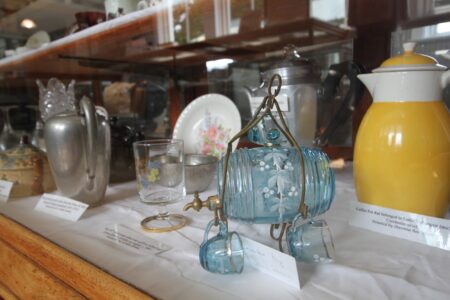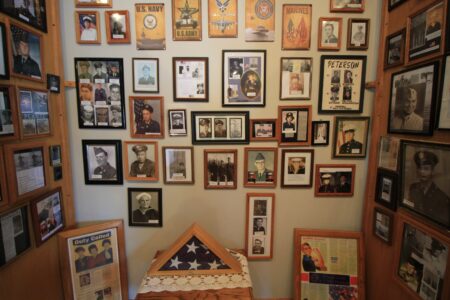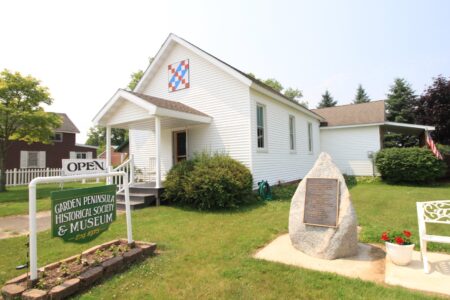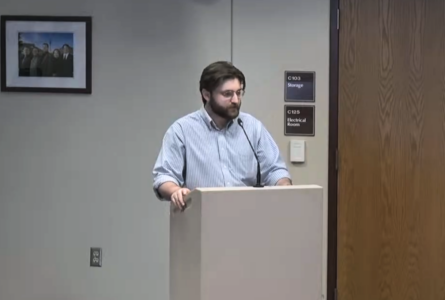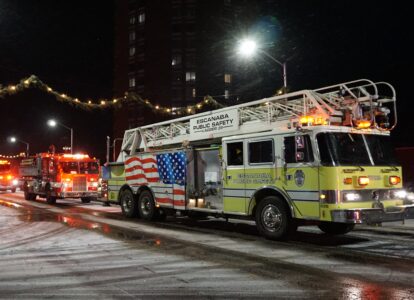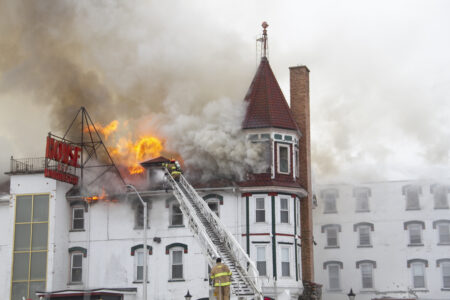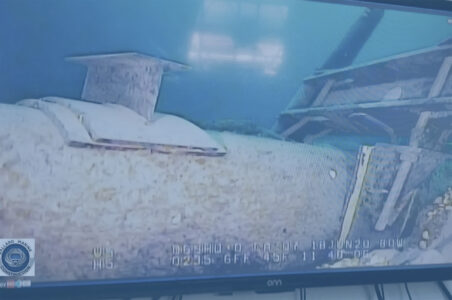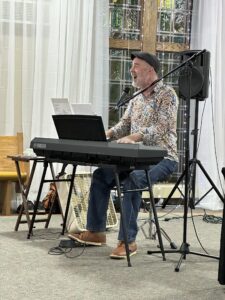Museum in Garden keeps local history alive
- R. R. Branstrom | Daily Press Dishes once used by the settlers of the Garden Peninsula are on display in the historical society’s museum.
- R. R. Branstrom | Daily Press Portraits of former local residents who served in the U.S. military, some with brief biographies, occupy a display on the western wall of the Garden Peninsula Historical Society Museum.
- R. R. Branstrom | Daily Press The Garden Peninsula Historical Society Museum, housed in the building that used to serve as the Hennessey School, is found on the main drag of the Village of Garden, at State Street and Mill Street.
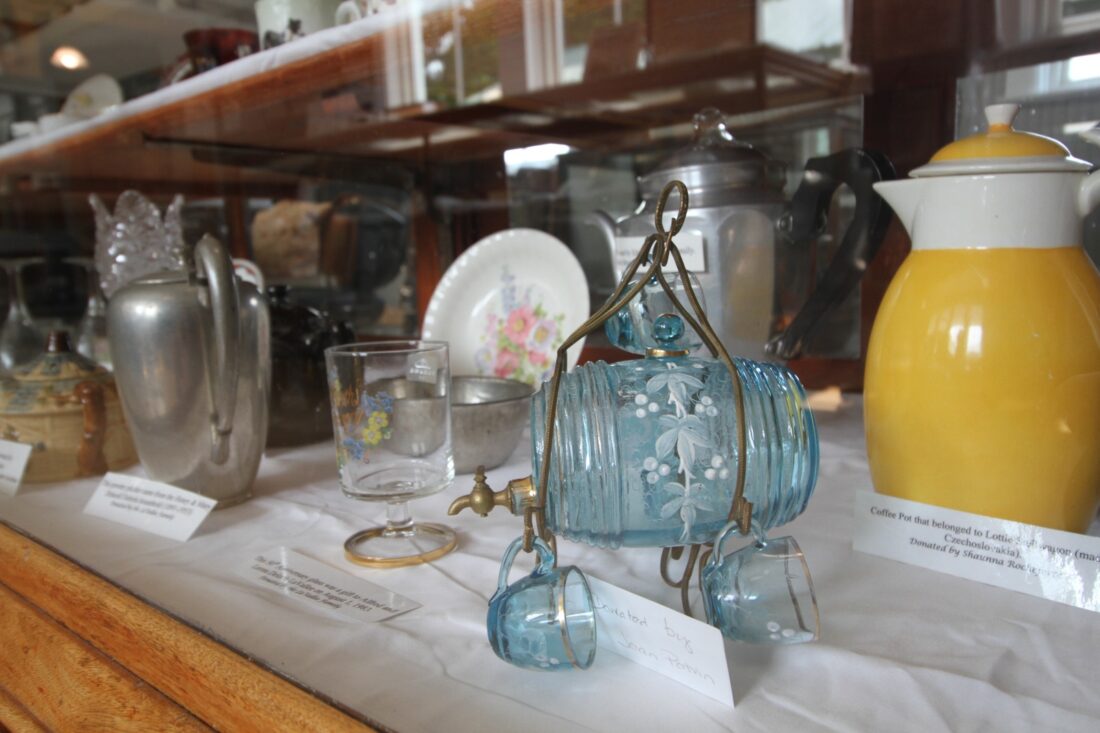
R. R. Branstrom | Daily Press Dishes once used by the settlers of the Garden Peninsula are on display in the historical society’s museum.
GARDEN — The museum of the Garden Peninsula Historical Society, located in the relocated schoolhouse in the Village of Garden, is open to visitors three days a week in the summertime.
Over the last 50 years, the society — organized on June 30, 1975 — has collected information on pioneer families and artifacts from residents in the area.
The Garden Peninsula, reaching into Lake Michigan and forming the eastern boundary of Big Bay de Noc, lies mostly in Delta County, with some in Schoolcraft. One main road, M-183 — or OO .25 Road, which becomes County Road 483 and II Road toward the end — runs 24 miles down the peninsula from Foxy’s Den at the intersection with U.S. Highway 2 in Garden Corners to Fairport at the southern tip.
European settlers arrived in the Garden area around 1850, when the peninsula was inhabited by native people the French called the Nocquet tribe. After living first on the islands, fishermen settled Sac Bay and Fairport, and soon after, the Jackson Iron Company built a smelting plant slightly farther up the western side of the peninsula and named that site Fayette after company agent Fayette Brown.
Made a state park in 1959, Fayette is the site on the peninsula that rakes in the most tourists, but the historical society’s museum is a destination, too — the society has gathered information about the residents who inhabited the peninsula’s multiple various communities, all of which is housed in a building that itself is part of history.
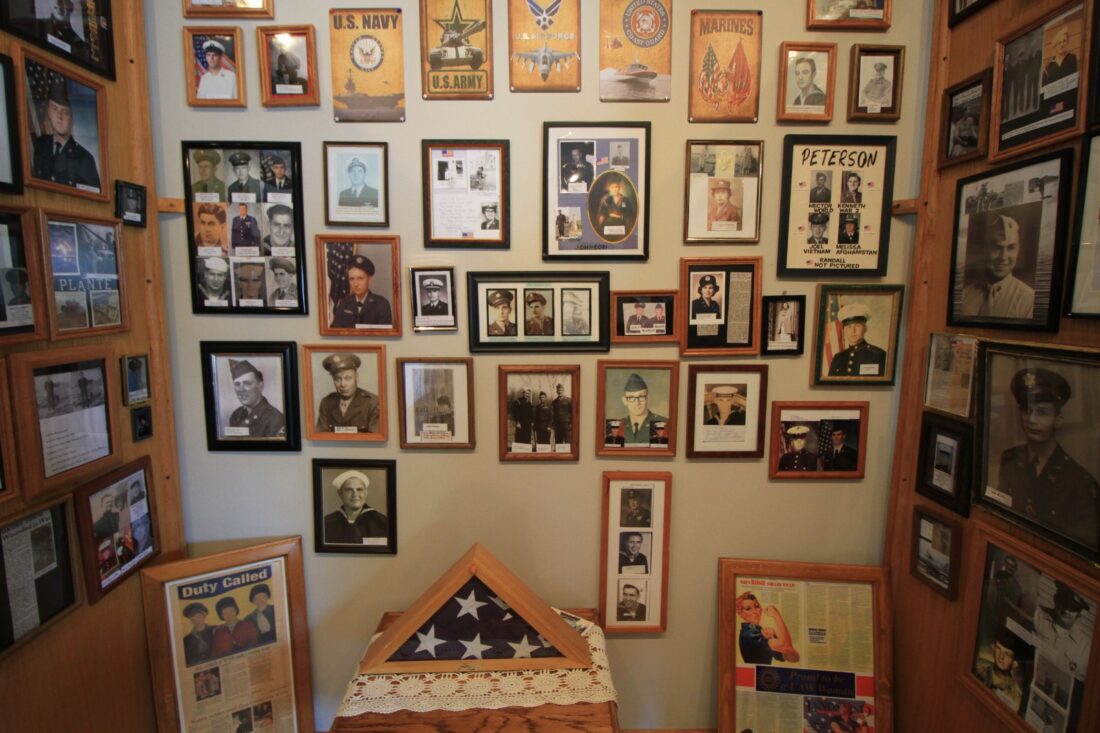
R. R. Branstrom | Daily Press Portraits of former local residents who served in the U.S. military, some with brief biographies, occupy a display on the western wall of the Garden Peninsula Historical Society Museum.
Around 1880, a two-room schoolhouse was built at the southern end of the town of Garden, but “in the early 1900s, it became necessary to build a school east of town on Little Harbor Road,” wrote Thomas Edward Jacques in 1976 in his master’s thesis on the history of the Garden Peninsula.
That was the Hennessey School, named for the landowner who provided space for the school. It operated until closing in 1930.
In 1952, a new school opened in Garden, thanks to a $150,000 donation from Catherine Bonifas upon her death in 1948.
At some point, the Hennessey schoolhouse was relocated from Little Harbor Road to the site of the school on the north side of town that now sits abandoned. The schools in Garden closed in the late ’60s, when the township consolidated with Nahma, Fairbanks and Inwood to form the Big Bay de Noc School District.
On Sept. 20, 1985, ten years after the Garden Peninsula Historical Society was formed, the Hennessey schoolhouse was moved a second time — specifically for the purpose of becoming the society’s museum. It was brought to a plot that had previously housed, at various points, a stagecoach stop, post office, store, barbershop and home, according to a plaque outside the museum, which also states that the property was donated to the village and the society by the Delorias.
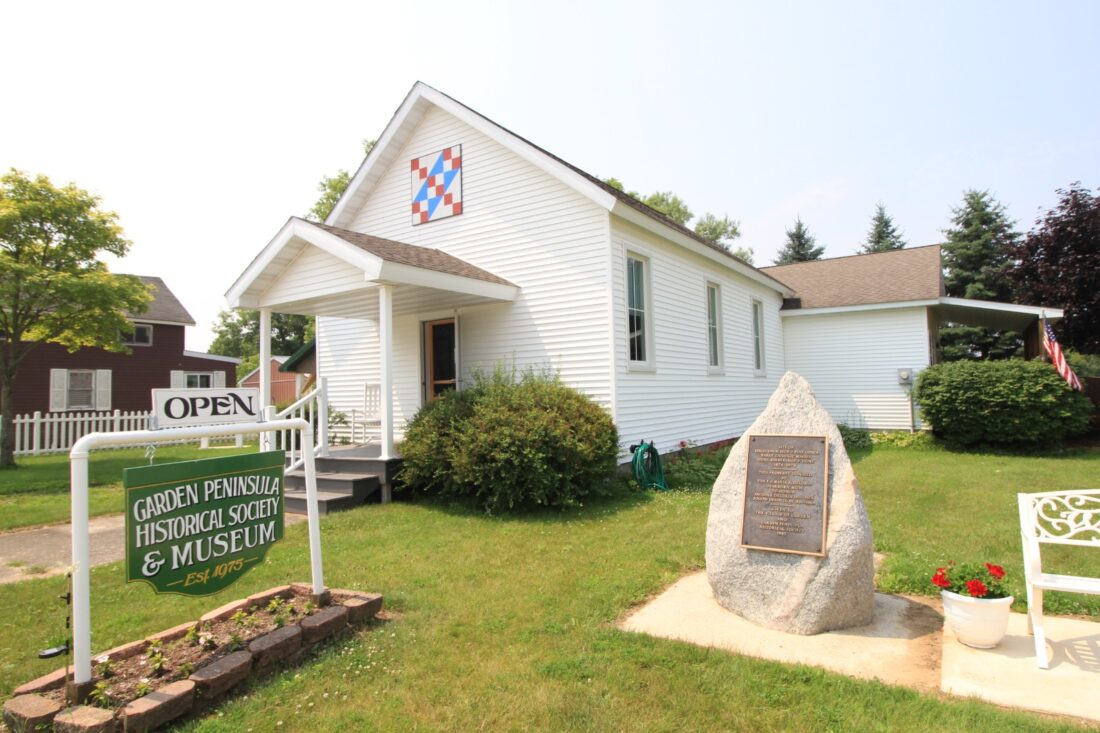
R. R. Branstrom | Daily Press The Garden Peninsula Historical Society Museum, housed in the building that used to serve as the Hennessey School, is found on the main drag of the Village of Garden, at State Street and Mill Street.
The Garden Peninsula Historical Society was awarded a $5,000 grant from the Michigan Yes 150 Sesquicentennial Program in 1986 to help with the conversion, restoration and upkeep of their museum. The museum opened in July 1987.
Today, paintings, portraits, china, and miscellany once belonging to immigrants and their descendants fill walls and cabinets of the museum — the two-room former schoolhouse. There’s an exhibit dedicated to area veterans, a display of wedding dresses worn by local women of the past, and a radio that had been purchased through fundraising by Fairport teenagers who wanted dances at their township hall to have music.
It’s a rosy nostalgia emulated at the museum.
Though clashes in the Garden Peninsula and on waters offshore between residents and law enforcement — particularly the Department of Natural Resources for fishing and the State of Michigan for marijuana — were publicized in and around the 1980s and ’90s, the people of the Garden Peninsula even back then felt that the lawless reputation the area received was unwarranted.
Situated in the village almost halfway down the lush, green and serene peninsula, the historical society and its museum certainly paint a scene of a charming community. There’s information about local families, items that indicate they lived ordinary, peaceful lives and made honest livings: For example, there are tools from a barber who began his trade in 1918 and sleigh bells that were used on horses carrying passengers to Cooks.
A bitter time is immortalized in newsprint behind frames: a multi-page, color-printed article from the Grand Rapids Press with the headline “Big Bay Goodbye” discusses the moment when commercial fishermen of Big Bay de Noc sold their boats and equipment after a state decree settled a debate.
Though the founders of the historical society are no longer around, current active member Brenda Tibbetts said:
“Without their help, this wouldn’t have happened at all. They were all so grateful for the pioneer families that came in. They thought that there had to be some kind of recognition for all their hard work in the area.”
She remarked that it was fortunate that people then and now have volunteered to help preserve history, but now, the society has been having trouble staffing the museum and attracting young people to continue the legacy.
At present, the museum — located at the intersection of State Street and Mill Street, just across the street from the Post Office in Garden — is open Fridays and Saturdays from 11 a.m. to 4 p.m. and on Sundays from noon to 4 p.m.
Just a couple years ago, the museum was open more, but finding volunteers with the time to keep it open proves tricky.
They haven’t let it gone to seed, though — the twice-relocated building is still in good shape. It received new windows not long ago and a fresh coat of paint on its interior walls this year.
The society meets once per month, usually on the first Monday, from June through September. They host an honoree dinner in September; the public may submit to be honored names of current or former residents of the Garden Peninsula who have lived for 80 years or more.
To support the museum, people may visit in person or send checks to the Garden Peninsula Historical Society at P.O. Box 6, Garden, Mich., 49835. Membership is $15 per year.

